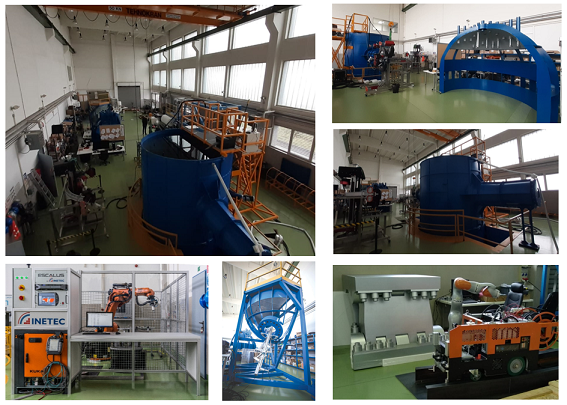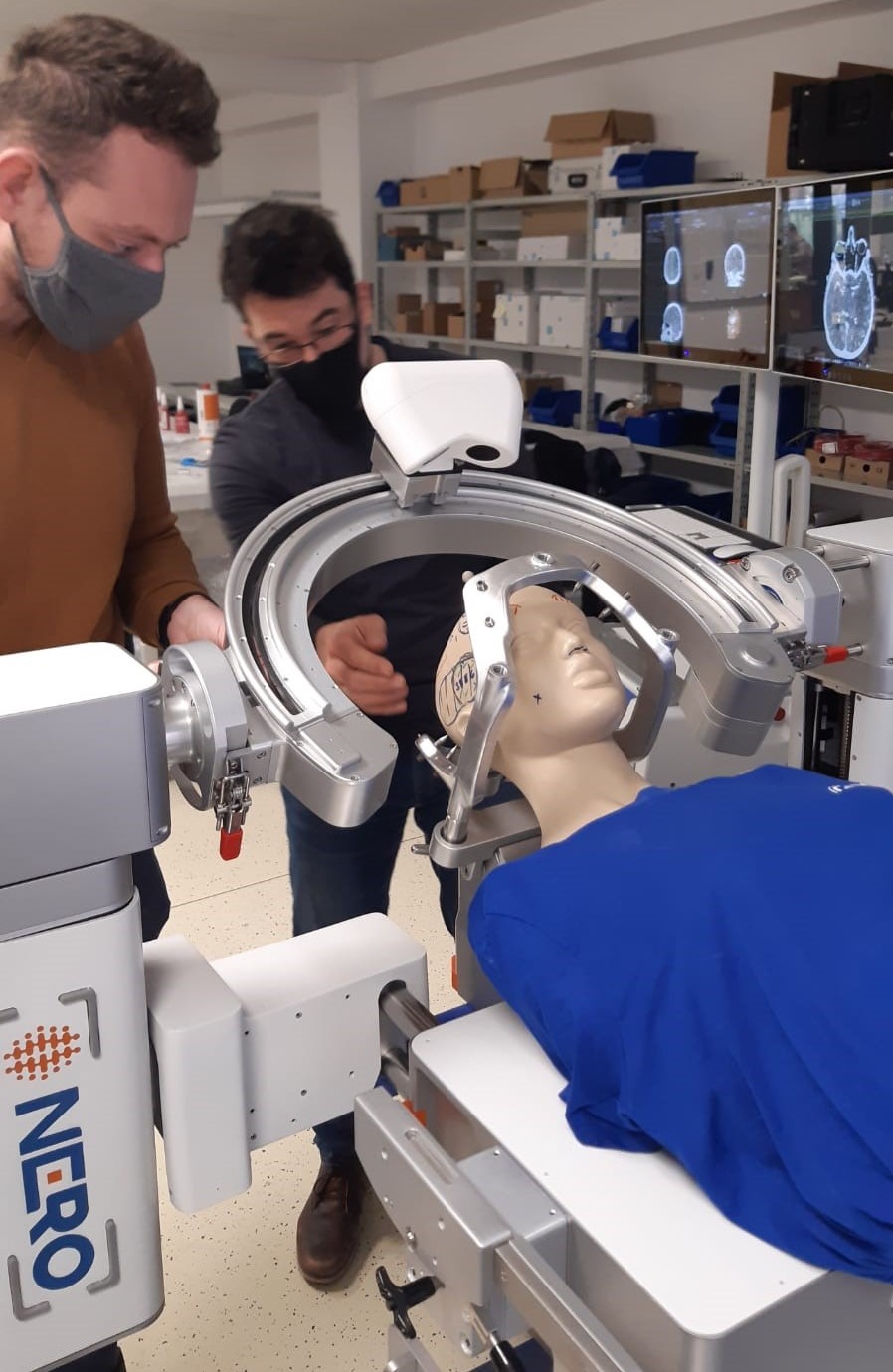Croatian Neurosurgical Robot NERO Soon to Perform Most Demanding Brain Surgeries
March 9, 2021 – By developing a Croatian neurosurgical robot NERO, designed for the most demanding brain surgeries, a team of scientists from the Croatian company INETEC confirms that Croatia can boast innovative solutions in robotics and artificial intelligence.
When it is finished, the neurosurgical robot NERO, a project backed by a team of scientists from the Croatian company INETEC, will enable faster, more precise, and more reliable neurosurgical operations. Made in cooperation with the partners – the Faculty of Mechanical Engineering and Naval Architecture in Zagreb (FSB) and the Dubrava Clinical Hospital (KBD), NERO is one of the first robots in the world made exclusively for use in the neurosurgery room. Many neurosurgeons accept it precisely because of its high level of precision, repeatability, and small dimensions.
Thanks to that, NERO will be able to perform the most demanding operations in deep brain structures, that is, the most complex neurosurgical surgeries, and he could even wake patients from a coma.
A global challenge
Due to the complexity of brain surgery, neurosurgeons have difficulty accessing and reviewing the areas they operate on, so they must rely on auxiliary devices, the so-called stereotactic frames. As explained by INETEC, in combination with the software, such frames make it possible to reach deep brain structures while avoiding the bigger blood veins in the brain. Precision plays a key role here, and various specialized companies worldwide are still trying to solve this challenge, including the Croatian INETEC.

Croatian neurosurgical robot NERO
"During the operation itself, the surgeon plans and selects the path of moving the surgical tool through the brain. The device, whether manual or automated, must ensure that this trajectory complies with minimal submillimeter deviations. Given the sensitivity of the application, any deviation can be fatal for the patient. Such requirement is a great challenge, and the fact that the CT scan of the patient's head, which serves as the basis for the mentioned trajectory planning, is done separately, both temporally and spatially, from the stereotactic frame or robot makes this task a global challenge," explains INETEC their motivation for creating a neurosurgical robot.
NERO will be used to position surgical tools in the biopsy, ventricular drainage, stereo-electroencephalography (SEEG), and deep brain stimulation (DBS) procedures.
From the nuclear sector to medicine
Unlike most other neurosurgical robots purchased off-the-shelf and whose software is repurposed for medicine, INETEC's scientists have been developing Croatian neurosurgical robot NERO from scratch in terms of hardware as well.
In this segment, INETEC relies on their experience in developing precision manipulators in the nuclear sector, which is their main area of work. Namely, INETEC develops a system for testing vital components of nuclear power plants. Today, they are one of the leading entities globally, and now, as they say, their goal is to apply the acquired experience and knowledge in the medical sector.

INETEC's test laboratories
"At first glance, there are not many links between nuclear and medical, more precisely, surgical use. However, the operation principles and technical requirements for the devices are quite similar. In both cases, the devices must be robust and reliable, the positioning accuracy must be high, and the design of the housing and other elements of the device must be designed to protect against contamination with either radioactive material, viruses, or bacteria," said the company, which recently celebrated its 30th birthday.
This project, unique both in Croatia and in the world, was co-financed by the European Union.
Clinical trials in Croatian hospitals will follow soon
Since neurosurgery is one of the most complex works on humans, the whole process of developing the neurosurgical robot has been challenging for this team.
"To meet the high demands on the precision and repeatability of device positioning, we must apply 'cutting edge' technology of mechanical solutions and robot control. In this context, the 'know-how' we possess from the nuclear sector certainly helps us to realize devices of such a sophisticated purpose. However, each new field of application, especially the medical-surgical sector, carries its own specifics and specific functional requirements," says INETEC.

Croatian neurosurgical robot NERO - camera testing
They thank their innovative and young engineers for successfully solving the NERO robot project's requirements, but they are aware that there is still a lot of work ahead of them. Namely, NERO will soon be pre-clinical and clinically tested in KBC Dubrava and then in other hospitals, which will be part of the device certification process.
INETEC scientists started this project in the last quarter of 2017. They expect its completion at the end of this year, after which NERO should start being used in operating rooms and thus facilitate the most demanding neurosurgical procedures.
All photos © INETEC
To read more about Croatian innovations, follow TCN's dedicated page.
Groundbreaking Surgeon from Rijeka Successfully Completes Complex Brain Surgery
Dinko Štimac M.D., the head of the Neurosurgery Department at the Clinical Hospital Center in Rijeka (KBC), is blazing a trail in Croatian medicine.


